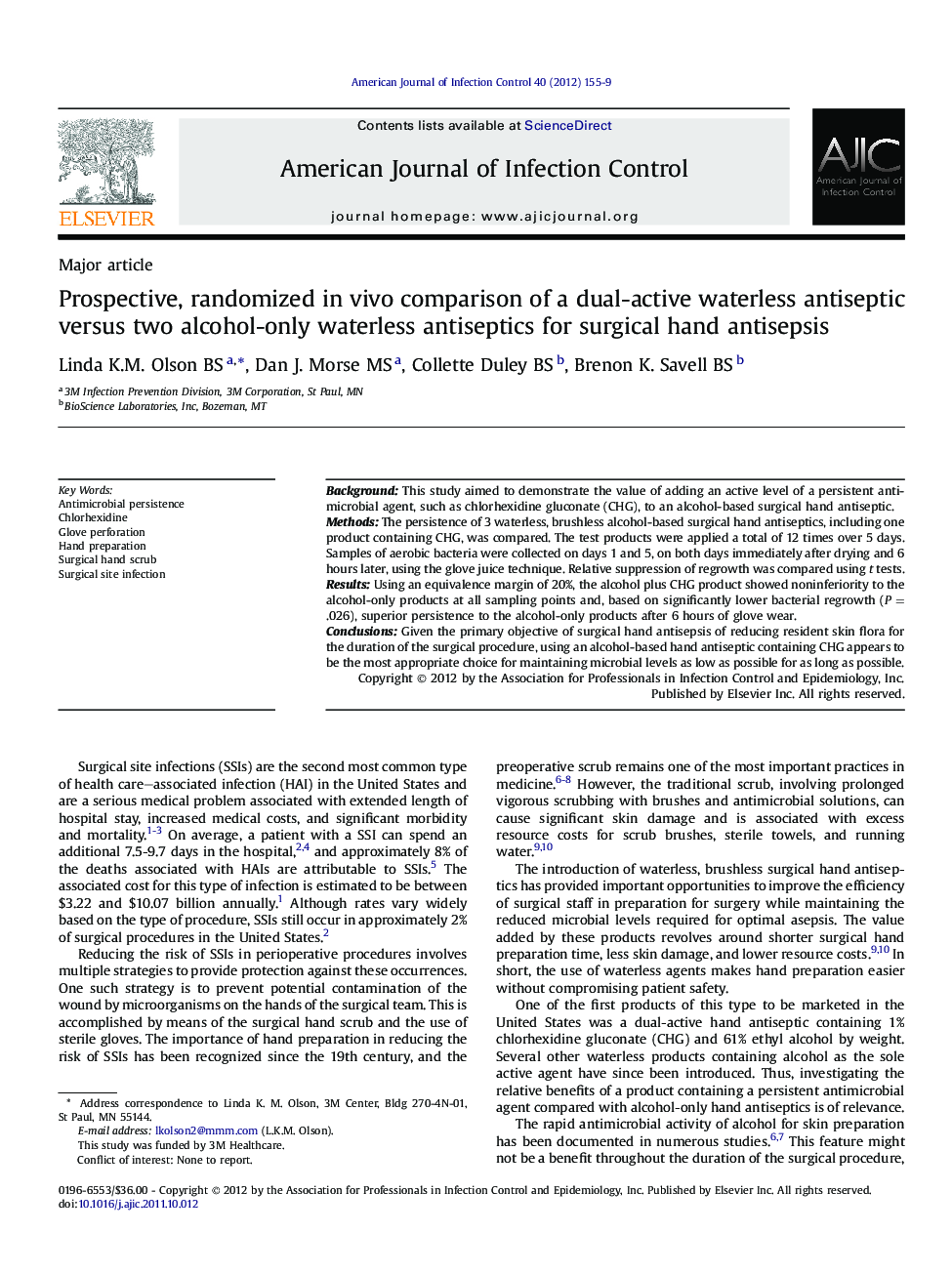| Article ID | Journal | Published Year | Pages | File Type |
|---|---|---|---|---|
| 2638125 | American Journal of Infection Control | 2012 | 5 Pages |
BackgroundThis study aimed to demonstrate the value of adding an active level of a persistent antimicrobial agent, such as chlorhexidine gluconate (CHG), to an alcohol-based surgical hand antiseptic.MethodsThe persistence of 3 waterless, brushless alcohol-based surgical hand antiseptics, including one product containing CHG, was compared. The test products were applied a total of 12 times over 5 days. Samples of aerobic bacteria were collected on days 1 and 5, on both days immediately after drying and 6 hours later, using the glove juice technique. Relative suppression of regrowth was compared using t tests.ResultsUsing an equivalence margin of 20%, the alcohol plus CHG product showed noninferiority to the alcohol-only products at all sampling points and, based on significantly lower bacterial regrowth (P = .026), superior persistence to the alcohol-only products after 6 hours of glove wear.ConclusionsGiven the primary objective of surgical hand antisepsis of reducing resident skin flora for the duration of the surgical procedure, using an alcohol-based hand antiseptic containing CHG appears to be the most appropriate choice for maintaining microbial levels as low as possible for as long as possible.
